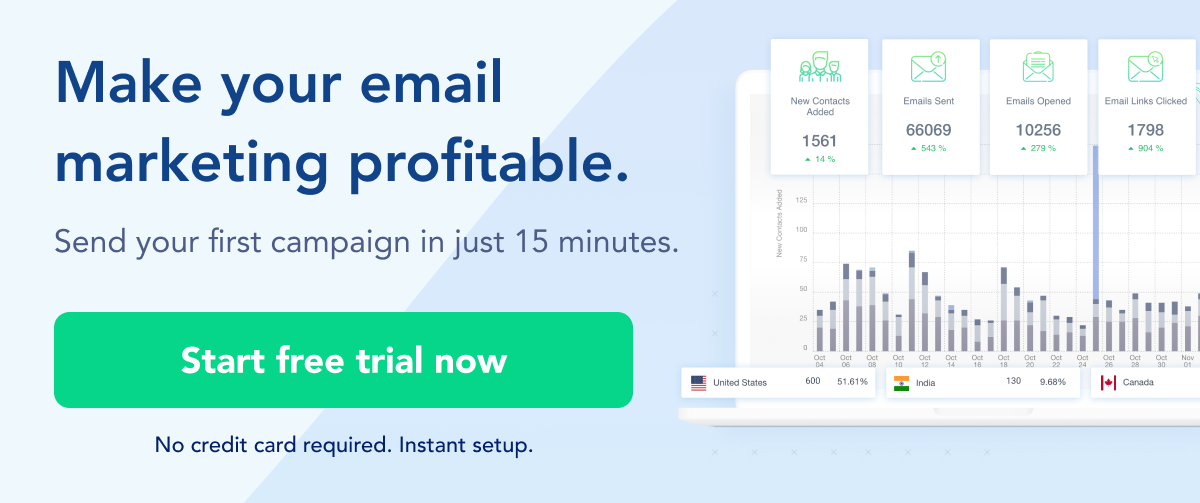
5 Great Email Salutation Examples (And 3 Not-so-great Ones)
Looking for some email salutation inspiration? We’ve got you covered.
In this article, we’ll share what makes a great email salutation, plus five examples of great email salutations to make a positive impression and three examples of not-so-great ways to start your email messages.
What to Consider When Creating Email Salutations?
The nature of your business communication and the relationship you have with your target audience are the two main factors to consider when structuring business emails.
Aside from this, you should also aim for the following when writing an initial email:
- Professionalism: When in doubt, err on the side of professional communication. If you don’t know the reader on a personal level, it’s wise to start by creating a professional setting.
- Some level of personalization: Adding in the recipient’s name is always best practice.
- Inclusivity: This is applicable in every instance, but even more so if you’re sending an email blast to a community and not an individual email recipient.
5 Great Email Salutations
Are you ready to learn from the best of the best? Follow these five stellar examples to boost open rates.
Example #1: Hi, Hey, or Hello [Name]
A casual yet friendly “Hi,” “Hey,” and “Hello” are the most common types of email salutations you’ll see. And the reason for that is simple: they strike a perfect balance, offering a welcoming tone without overstepping into formality.
You can use this salutation in many different contexts:
- Professional correspondents
- Personal emails
- Informal emails
- Email threads
- Event Invitation Emails
Here’s a simple example from Loom, which uses “Hi” followed by the recipient’s first name to keep them updated on changes to a customer agreement. This effective business email salutation is short, professional, and personalized.

Source: Loom
If you want to add an extra dash of warmth, opt for adding an emoji, like a friendly hand wave. Doing so can amplify the friendly vibe, especially when addressing a recipient without a specific name.

Source: Dyte
For instance, take an example from an email from Dyte, a leading video calling SDK provider. Their salutation included “Hi 👋,” since they were targeting all developer prospects instead of any individual person.
This approach maintains professionalism while injecting a personalized touch, making recipients feel valued right from the start. Plus, email readers love it.

Source: X
Example #2: Dear [Name]
When writing a formal email, you should always consider cultural norms and address the reader in a way that's respectful for them, so something like “Dear [Name]” works really well for traditional audiences.

Source: PETA India
Just to shed some context here. In India, college professors and professional acquaintances prefer to write “Dear” in email. salutations. In fact, they’ve been taught this email salutation style in schools, too.
As an email salutation, “Dear [Name]” is popular with non-profits, too, as they deal with global audiences, and “Dear” offers the same level of professionalism and friendliness as a typical “Hi,” “Hey,” or “Hello,” without the casualness.
Example #3: Greetings [Name/Team]
“Greetings” is another email salutation that works well, especially if you’re addressing a community or a team of virtual assistants.
For example, Amit Raj, founder of The Links Guy, typically uses “Greetings” when addressing his audience.
In his own words, “It is a safe yet formal way to start an email, and is accepted universally (amongst audiences) irrespective of place and culture.”
Example #4: Good Morning/Afternoon
Another email salutation that’s perfectly professional and friendly? “Good Morning” or “Good afternoon.”
Pair it with the name of your recipient or your community, and you’re golden.
This salutation typically works best if your audience is local (and in the same time zone). However, most readers will typically have no problem, even if you start the email by mentioning your own time zone.
Example #5: [Recipient Name]—just the name
Lastly, you can’t go wrong by adding the personalization element of speaking directly to the recipient by their first name.
Take it a step further and add the name to the subject line, as Nlyte does in the example below, to create a hook to engage. That way, they’ll be more interested in the body of your email content.

Source: Nlyte
This email salutation typically works best under the following conditions:
- You’re the company sending the email and not an individual.
- The salutation refers to a person and not the community.
3 Not So Great Email Salutations
Now, let’s flip the script. Here are three examples of how you don’t want to start your email communication.
Example #1: Yo [Name]
Starting off, something super casual like a “Yo” or a “What’s Up” typically won’t do, especially if your goal is to send a professional email or want to create a professional setting.
In fact, people have been averse to such greetings on various platforms, not just emails. So, it’s best to stay away from them even more if you’re addressing your messages to strangers.
Example #2: To Whomsoever It May Concern
Something like “To whomsoever it may concern” would be perfect in letters and formal documents. But email salutations? Not so much.
In the words of Abhi Bavishi, a growth marketer, “The over-formal ’To Whom It May Concern’ feels like a relic. It’s like wearing a three-piece suit to a casual brunch.”
The reason for not opting for this email salutation is simple. There’s no personalization involved, and it’s often used in more dividing normal settings, devoid of any friendliness or casualness.
Example #3: Heyyyyyy [Name]
Another email salutation you should kick to the curb? Prefixes that overdo the friendly Heys, something like “Heyyyy” or “Hiiiii” or “Helloooo.”
This is a sure-shot way of converting a good email salutation into a bad one because, in the words of Abhi, the extra words (or, in this case, letters) can have an awkward lean-in and can, therefore, backfire.
If you’re sending this salutation to a close co-worker or a friend, then they probably wouldn’t mind. But should you use them when conversing with strangers? The answer is a resounding no.
In a similar vein, if you skip the name and simply write “Salutations” as an email salutation, this doesn’t provide any value to the reader. It lacks personalization and enthusiasm (read: meh) and can come off as spammy. Also, skip the extra exclamation marks.

Learn More About Emails and Email Marketing on the Sendx Blog
We hope you found this piece helpful and that you gained some useful insights from it.
Remember, keep your salutations short and sweet. Always lean towards something professional rather than too casual (at least at the beginning). Going the extra mile for your recipients goes a long way in boosting open rates (and ultimately conversions).
If you’re interested in learning more about email etiquette (like email sign-offs), best practices, and marketing, the SendX blog has you covered. It’s filled with expert-led advice.
We also offer an ESP that can perform all of the core email marketing functionalities of an excellent service provider but at a fraction of the cost. What’s not to love?
You’re one step away from improving your emails once and for all.



